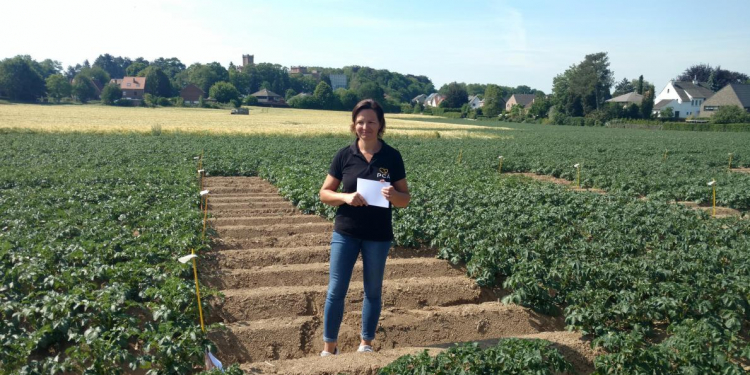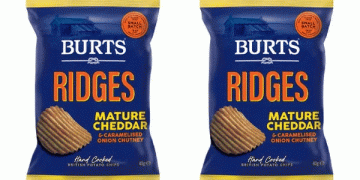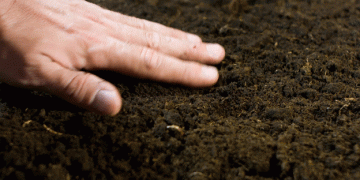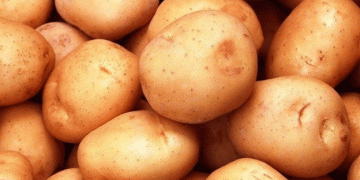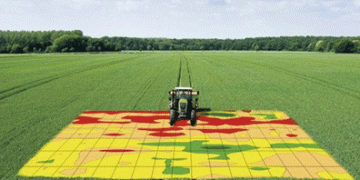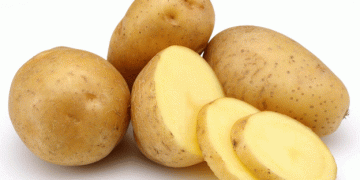A variety trial in potato was set up in Lennik as part of the Potato Agricultural Center. The aim is to find a worthy alternative to Fontane and Innovator, each of which has its own problems in cultivation. There are 7 races in the running for Fontane and 3 for Innovator. Some varieties, such as Babylon, are showing promise.
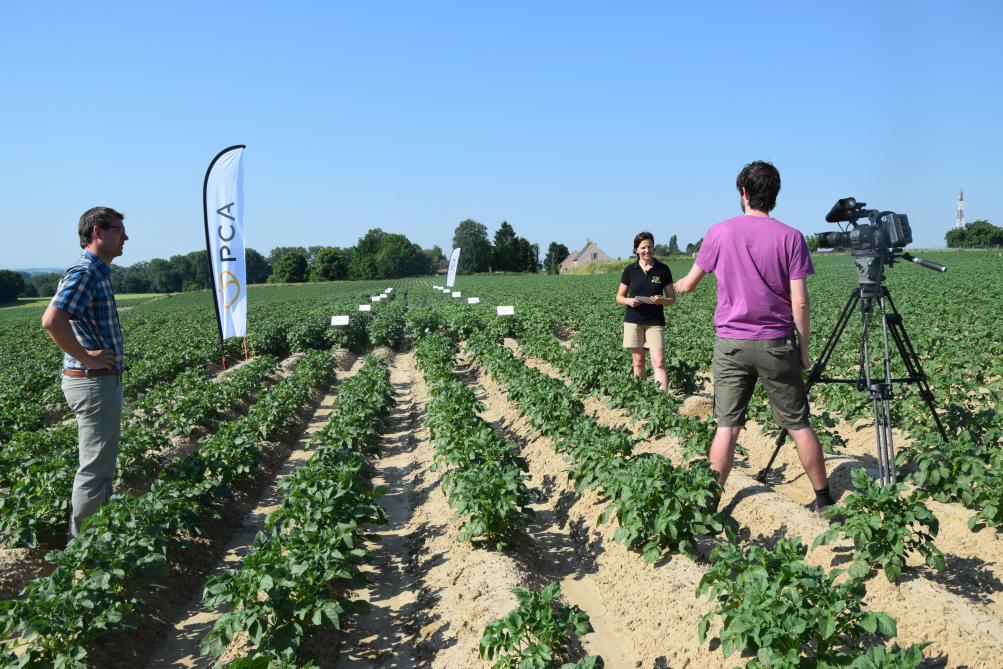
In the potato field of the demo company Lemaire-Taelemans, a potato trial was set up within the framework of the Flemish government. The potato varieties in trial are intended for processing into chips, and the aim is to look for alternatives to the yellow-fleshed Fontane and the white-fleshed Innovator. Fontane is mainly intended for frozen chips and for processing into potato products. Innovator then offers long fries that are sought after by fast food chains.
The trial itself will be set up at several locations, so that the varieties can be tested in different conditions.
For the time being, Fontane is the most important variety in Flanders, with 50% of the potato area. Challenger and Innovator follow, with 8 to 6% of the potato area respectively. Bintje is in fourth place, with 5% of the potato area. “Bintje was once a large variety, but it does have some drawbacks, such as its sensitivity to the potato cyst nematode Globodera rostochiensis, ” says PCA researcher Ilse Eeckhout.
Disadvantages Fontane and Innovator
Other varieties have therefore become more important in the meantime, such as Fontane and Innovator. However, these varieties also have certain bottlenecks. Fontane is resistant to the potato cyst nematode Globodera rostochiensis , but it is sensitive to the potato cyst nematode Globodera pallida . “We don’t want to shift the problem, which is why we are looking for alternatives,” says Eeckhout.
Innovator is resistant to Globodera pallida , but has other disadvantages. Due to the low underwater weight, Innovator is not suitable for light soils and achieves the highest potential on heavier soils. It is not recommended on sandy soil because of the high risk of rust and brown spots. “It forms few tubers per bush, and the tubers are coarse. However, because Innovator is drought sensitive, the yield can be disappointing, especially in dry and hot years. Last year in the trials only a yield of 34 tons/ha was noted. Finally, Innovator is sensitive to metribuzin, although a farmer can take this into account.”
According to the researcher, it is therefore necessary to look for worthy and better alternatives to Fontane and Innovator in the context of a good IPM strategy. These varieties therefore also serve as a reference.
Alternatives to Fontane
There were 7 varieties in the trial. Babylon is in its third year. For Cardyma, Chenoa, Edison, Palace and Virginia, the researchers have 2-year results. Lugano is a new variety, so little information is available about its properties.
Babylon is the result of a cross with the Agria variety. As a result, one of the characteristics is that there are few tubers per shrub. The tubers are coarse, so it is better to keep a smaller planting distance in the row, of 30 cm. Babylon is sensitive to metribuzin, so be careful during weed control. It also has a low underwater weight, so there is an occasional chance of floats. Nevertheless, the variety has high potential, as it achieved a yield that was 6% higher than that of Fontane.
Cardyma Due to its resistance to G.pallida, much was expected from Cardyma. However, the yield was disappointing: it was 12% lower than that of Fontane. This is because Cardyma matured earlier and did not have the time to form large tubers after the drought and heat. Still, the quality was good. The tubers are also slightly longer than at Fontane, which is positive for the processing industry. This is also the reason that Cardyma will also be in trial next year.
Chenoa Already in August – after 120 days – the Chenoa crop had already matured, with the result that the yield is 9% below that of Fontane. The tubers were also too fine in the sorting.
Edison Like Cardyma and Chenoa, Edison matured too quickly, resulting in a 7% lower yield than Fontane’s. Last year Edison had the best baking color of all breeds. It naturally has few reducing sugars, which has the advantage that a batch of Edison can be stored at a low temperature.
Lugano This variety has broad resistance to both Globodera rostochiensis and Globodera pallida . This variety produces few but very coarse tubers per bush. Hence the close planting distance in the row. Lugano is late ripening. It can therefore still produce a nice yield late in the season.
Palace This variety ripens a little later than Fontane, and surprised by its vitality. The crop remained green, even through the stress period of heat and drought. The yield was 5% higher than that of Fontane. The only point of attention was the high underwater weight, which increases the chance of impact blue.
Virginia This is a late variety and has a rather slow start to the season. Still, the breed can go on for a long time. The bush produces very coarse tubers with a good length, making it suitable for the processing industry. The yield was at Fontane’s level, with a yield that is 2% higher.
Alternatives to Innovator
3 varieties were planted for Innovator. Kelly has already had 1 year of research results available. Etana and Shepherd are new varieties in trial, so there is still little idea of yield and quality.
Kelly This is a late variety that is slow to start but can last for a long time. It stays green longer, even in dry summers. It forms many stems, which means many tubers. That can be positive for the yield. Relative to Innovator, Kelly achieved a yield that was 19% higher than Fontane’s.
Etana This variety is resistant to Globodera pallida . It is characterized by a strong root system and good foliage. Moreover, according to the breeding company, it needs little nitrogen, which can be an advantage in the current fertilization problem.
Shepherd This variety is also resistant to G.pallida, and ripens later than Innovator. This provides benefits for the yield.
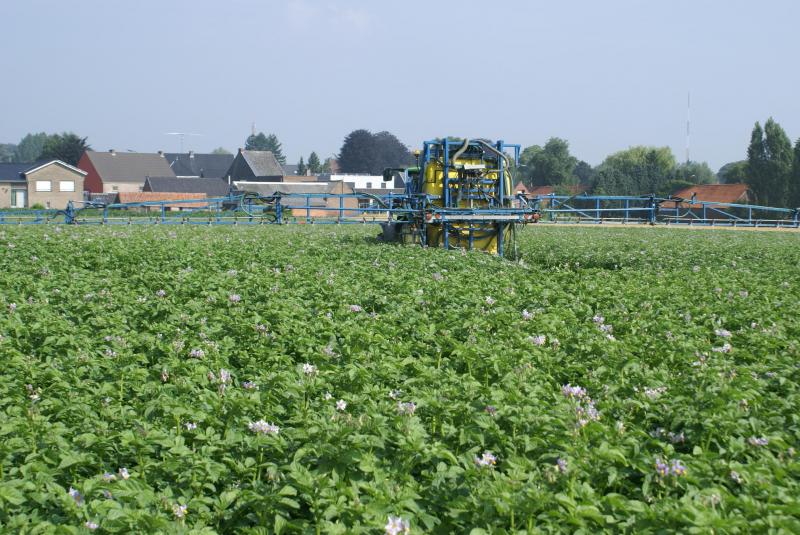
Some points of attention in cultivation
Ilse Eeckhout indicates that the potato crops are growing well, but that you should be alert for uninvited guests. For example, we have to wait for late sprouts of thorn apple. The problem is increasing year after year. Both the seed pod and the plant are poisonous, and the spread is very rapid. Manual removal, even when the plant is still small, is recommended.
The Colorado potato beetle is also common, and the population is still increasing. This can be avoided by removing potato storage as much as possible so as not to give the animals food. Fighting is best done specifically without killing natural enemies. You can with Tracer, Neemazal and Coragen. Finally, aphids are rarely found in the fields, fighting has hardly been done in recent years as the population of natural enemies keeps the number low.
Finally, Eeckhout points out the advantages of using maleic hydrazide during the field phase. “It can ensure that the potatoes remain dormant for several weeks to months after harvesting. This gives the grower time to ventilate while drying, to do wound healing and to strive for the right storage temperature before carrying out the first treatment with germ inhibitors.”
